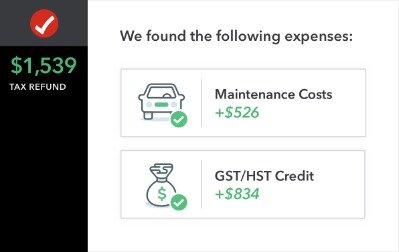Contents:

The times interest earned ratio is a measure of a company’s ability to meet its debt obligations based on its current income. The formula for a company’s TIE number is earnings before interest and taxes divided by the total interest payable on bonds and other debt. While both ratios measure a company’s ability to make its interest payments, they do so in different ways. The interest coverage ratio looks at a company’s ability to make its interest payments in relation to its EBIT. The times interest earned ratio looks at a company’s ability to make its interest payments in relation to its interest expenses. As a result, the two ratios provide different insights into a company’s financial health.
What is the purpose of the time interest earned ratio?
Times interest earned ratio measures a company's ability to continue to service its debt. It is an indicator to tell if a company is running into financial trouble. A high ratio means that a company is able to meet its interest obligations because earnings are significantly greater than annual interest obligations.
The profit margin ratio is broadly the ratio of profit to total sales times one hundred percent. It may be calculated as either EBIT or EBITDA divided by the total interest payable. In this exercise, we’ll be comparing the net income of a company with vs. without growing interest expense payments. Barbara is currently a financial writer working with successful B2B businesses, including SaaS companies. She is a former CFO for fast-growing tech companies and has Deloitte audit experience.
Times Interest Earned Ratio Example
The interest coverage ratio is a debt and profitability ratio used to determine how easily a company can pay interest on its outstanding debt. Obviously, no company needs to cover its debts several times over in order to survive. However, the TIE ratio is an indication of a company’s relative freedom from the constraints of debt. Generating enough cash flow to continue to invest in the business is better than merely having enough money to stave off bankruptcy.
- Failing to meet these obligations could force a company into bankruptcy.
- Investors are looking forward to annual dividend payments of 4% plus an increase in the company’s stock price.
- This means that the business has a high probability of paying interest expense on its debt in the next year.
- The company’s shareholders expect an annual dividend payment of 8% plus growth in the stock price of XYZ.
Time interest earned ratio , also known as interest coverage ratio, indicates how well a company can cover its interest payments on a pretax basis. The larger the time interest earned, the more capable the company is at paying the interest on its debt. Higher TIE Ratio → The company likely has plenty of cash to service its interest payments and can continue to re-invest into its operations to generate consistent profits. If a company has a high TIE ratio, this signifies its creditworthiness as a borrower and the capacity to withstand underperformance due to the ample cushion provided by its cash flows.
times interest earned ratio
However, for a company with debt that might need to take on more, the TIE ratio can provide the business and potential creditors or investors with a snapshot of how likely it will repay an additional loan. Investors and lenders aren’t the only ones who use the times interest ratio. For instance, if a company has a low times interest earned ratio, it can probably expect have difficulty arranging a loan. For example, if a business earns $50,000 in EBIT annually and it pays $20,000 in interest every year on its debts, figuring the times interest earned ratio requires dividing $50,000 by $20,000. If you’re a small business with a limited amount of debt, the times interest earned ratio will likely not provide any new insight into your business operations.

A business that makes a consistent annual income will be able to maintain debt as a part of its total capitalization. Consequently, creditors or investors who look at your income statement will be more than happy to lend to a business that has been consistently making enough money over a long period of time. The times interest earned ratio measures a company’s ability to pay its interest expenses. A company can raise capital through debt offerings rather than issuing stocks in as much as the company has a record of maintaining annual regular earnings. Companies that generate regular earnings are more attractive to lenders. A good example is the Utility company, they will be able to raise 60% or more of their capital from issuing debt.
Final thoughts on times earned interest ratio
Having a low TIE ratio means that the company is riskier to lend to, resulting in a higher interest rate on the loan. This makes having a low TIE ratio unfavorable, but having a high one is more favorable. A high or low TIE ratio is highly dependent on the company and its industry, and it can be accurately analyzed by comparing it to a prior period, industry average, or competitor. The return on equity ratio illustrates how efficiently the equity of a company is being utilized to generate a profit. The operating margin ratio compares the operating income to its net sales to illustrate its operating efficiency.
What is 4 time interest earned ratio?
In other words, a ratio of 4 means that a company makes enough income to pay for its total interest expense 4 times over. Said another way, this company's income is 4 times higher than its interest expense for the year.
If you want an even more clearer picture in terms of cash, you could use Times Interest Earned . It is similar to the times interest earned ratio, but it uses adjusted operating cash flow instead of EBIT. When you use this metric, you are considering the actual cash that the business has to meet its debt obligations. To elaborate, the Times Interest Earned ratio, or interest coverage ratio, is calculated by dividing a company’s earnings before interest and taxes by its periodic interest expense.
Use and Importance of Times Interest Earned Ratio
Barbara has an MBA degree from The University of Texas and an active CPA license. When she’s not writing, Barbara likes to research public companies and play social games including Texas hold ‘em poker, bridge, and Mah Jongg. The following FAQs provide answers to questions about the TIE/ICR ratio, including times interest earned ratio interpretation. TIE ratios are an indicator of the long-term financial strength of an organization. If you are a small business with a limited amount of debt, then the ratio is not all that important.
Kimberly-Clark: An Intriguing Stock Option for Investors Looking to … – Best Stocks
Kimberly-Clark: An Intriguing Stock Option for Investors Looking to ….
Posted: Sat, 22 Apr 2023 05:35:11 GMT [source]
The company will have to find another source for capital or avail debt at a significantly lower cost of debt. Non-operating income, in accounting and finance, is gains or losses from sources not related to the typical activities of the business or organization. Non-operating income can include gains or losses from investments, property or asset sales, currency exchange, and other atypical gains or losses. Times Interest Earned ratio measures a company’s ability to honor its debt payments.
It’s calculated by dividing net income before interest and taxes by the amount of interest payments due. A times interest earned ratio of more than 3 indicates that the company can meet its debt obligations while still being able to reinvest in itself for growth. Investors and lenders may look at the times interest earned ratio when deciding whether to purchase equity or extend credit to a company. The times interest earned ratio, also known as the interest coverage ratio, measures how easily a company can pay its debts with its current income. To calculate this ratio, you divide income by the total interest payable on bonds or other forms of debt. After performing this calculation, you’ll see a number which ranks the company’s ability to cover interest fees with pre-tax earnings.
Franklin Electric: Financial Ratios and Analyst Opinions – Best Stocks
Franklin Electric: Financial Ratios and Analyst Opinions.
Posted: Fri, 21 Apr 2023 20:12:45 GMT [source]
SmartAsset’s free tool matches you with up to three financial advisors who serve your area, and you can interview your advisor matches at no cost to decide which one is right for you. If you’re ready to find an advisor who can help you achieve your financial goals, get started now. However, as your business grows, and you begin to turn to outside resources for funding opportunities, you’ll likely be calculating your times earned interest ratio on a regular basis.
In this respect, Joe’s Excellent Computer Repair doesn’t present excessive voided check, and the bank will likely accept the loan application. Companies also use times interest earned ratios to compare themselves to other firms. However, the times interest earned ratio is affected by the industry or sector, so companies will generally compare themselves with companies in the same business. The times interest earned ratio is also less useful for small companies that don’t carry a lot of debt, and for companies that are losing money.
How do you calculate time earned interest ratio?
To calculate the times interest earned ratio, we simply take the operating income and divide it by the interest expense. For example, Company A's TIE ratio in Year 0 is $100m divided by $25m, which comes out to 4.0x.
On the other hand, businesses that have irregular annual earnings try to use stock to raise capital. Times Interest Earned can also be referred to as an interest coverage ratio. Whenever a company fails to meet up with its debt obligations, then bankruptcy is inevitable. To avoid bankruptcy, a company needs to generate much earnings so as to meet up with its debts. All of these contribute to the TIE Ratio and referred to as Capitalization factors.
This is because it determines a company’s capacity to pay for interest and debt services. Because such interest payments are often made long term, they are generally classified as a continuing, fixed cost. The times interest earned ratio is another measure of a company’s ability to make its interest payments. It is calculated by dividing a company’s EBIT by its interest expenses. A higher times interest earned ratio indicates that a company is better able to make its interest payments. For example, a company with a times interest earned ratio of 2.0 is able to make its interest payments twice over with its EBIT.
- Generally, the higher the TIE, the more cash the company will have left over.
- It can suggest that the company is under-leveraged, and could achieve faster growth by using debt to expand its operations or markets more rapidly.
- A times interest earned ratio of at least 2.0 is considered acceptable.
- A bank or investor would use the ratio to determine if a company might need to pay down other debts before taking on more.
Looking at this ratio shows how well they can meet the current debt they hold while also having extra room for more business investments. Depending on the company, its history and its industry, the lender will use this ratio to help them decide whether or not to lend the company money. A high TIE ratio gives the company better odds of receiving a loan, while a low TIE ratio may hurt its chances.

If you would like to learn more about accounting tips, altLINE has many resources available for you. Here’s everything you need to know about the Times Interest Earned ratio, which includes how to calculate it and what it means for your business. See how bankers, brokers, and financial advisors can partner with altLINE as a part of our referral program. Our second example shows the impact a high-interest loan can have on your TIE ratio. BEP is calculated as the ratio of Earnings Before Interest and Taxes to Total Assets.
Medallion Financial Corp. Increases Market Stature Amidst Growing … – Best Stocks
Medallion Financial Corp. Increases Market Stature Amidst Growing ….
Posted: Fri, 21 Apr 2023 23:56:13 GMT [source]
Will your company have enough profits from business operations to pay all interest expense due on its debt in the next year? Use the times interest earned ratio , also known as interest coverage ratio , to make an assessment. While it is easier said than done, you can improve the interest coverage ratio by improving your revenue. The company will be able to increase its sales which will help boost earnings before interest and taxes.
The TIE specifically measures how many times a company could cover its interest expenses during a given period. While it’s unnecessary for a company to be able to pay its debts more than once, when the ratio is higher it indicates that there’s more income left over. A higher discretionary income means the business is in a better position for growth, as it can invest in new equipment or pay for expansions. It’s clear that the company’s doing well when it has money to put back into the business.
Times interest earned ratio is a financial ratio that signals the company’s ability to pay off its debt. Data used to calculate these ratios are provided on a company’s balance sheet, income statement, and statement of changes in equity. Analyzing long-term liabilities combines debt ratio analysis, credit analysis and market analysis to assess a company’s financial strength. This means that Tim’s income is 10 times greater than his annual interest expense. In this respect, Tim’s business is less risky and the bank shouldn’t have a problem accepting his loan. The times interest earned ratio is calculated by dividing income before interest and income taxes by the interest expense.
What is good times interest earned ratio?
A times interest earned ratio of 2.5 is acceptable. If the ratio is under 2, it may be a cause for concern among investors or lenders and may indicate the company is in danger of having to file for bankruptcy protection. A times interest earned ratio can also be too high.